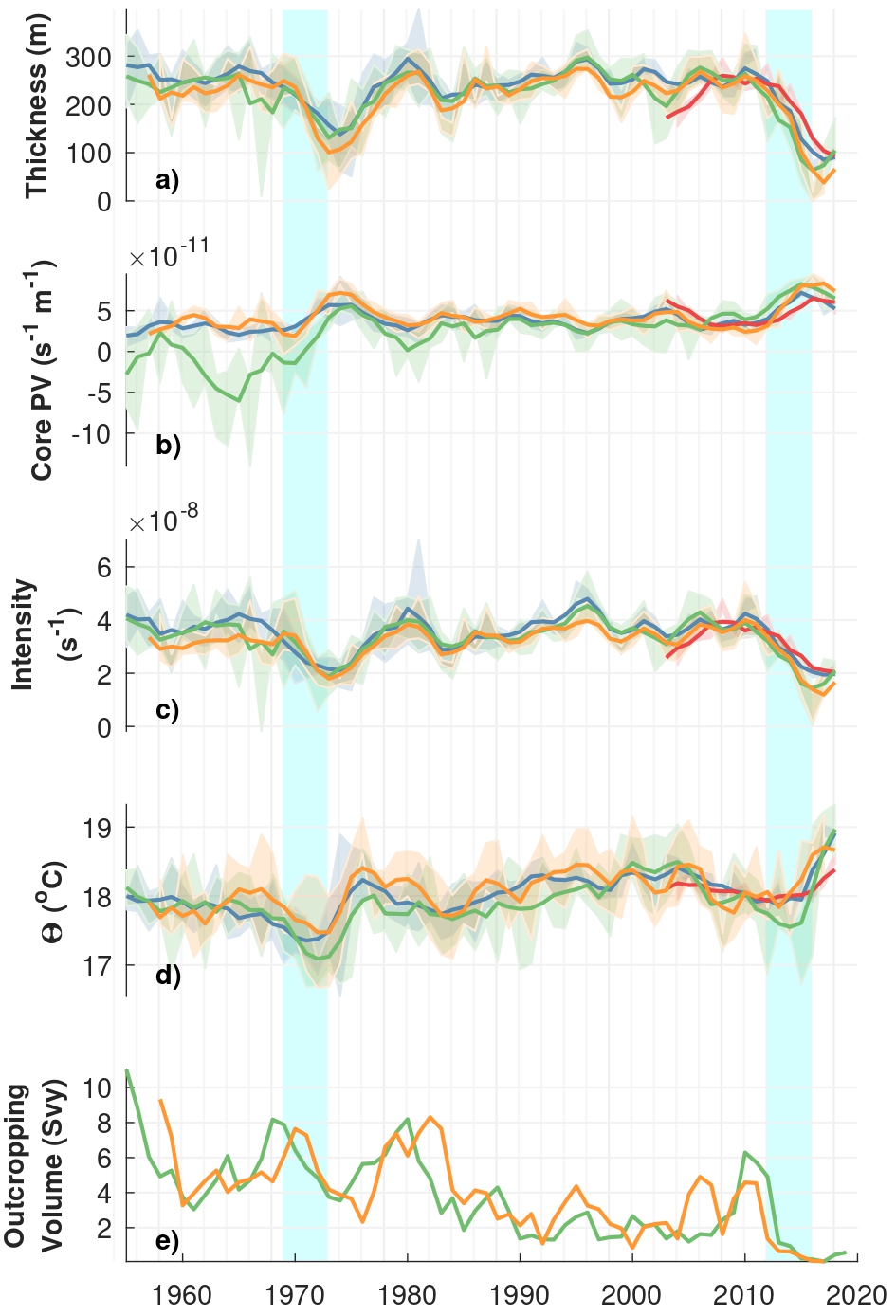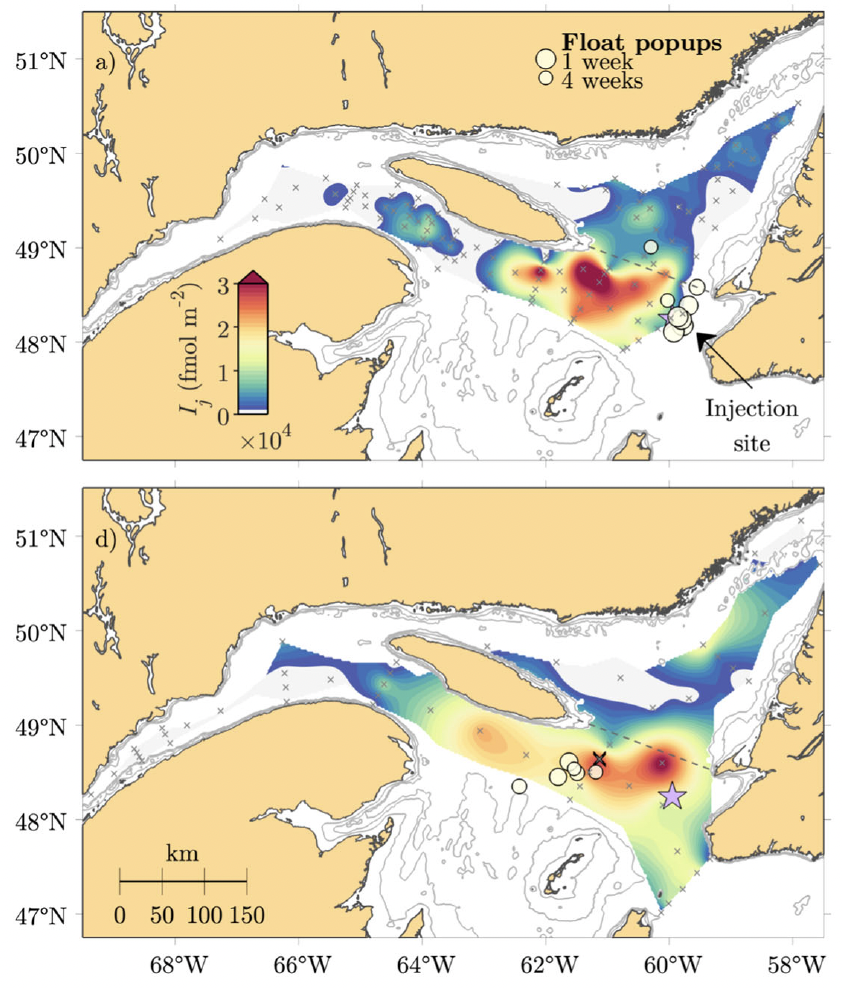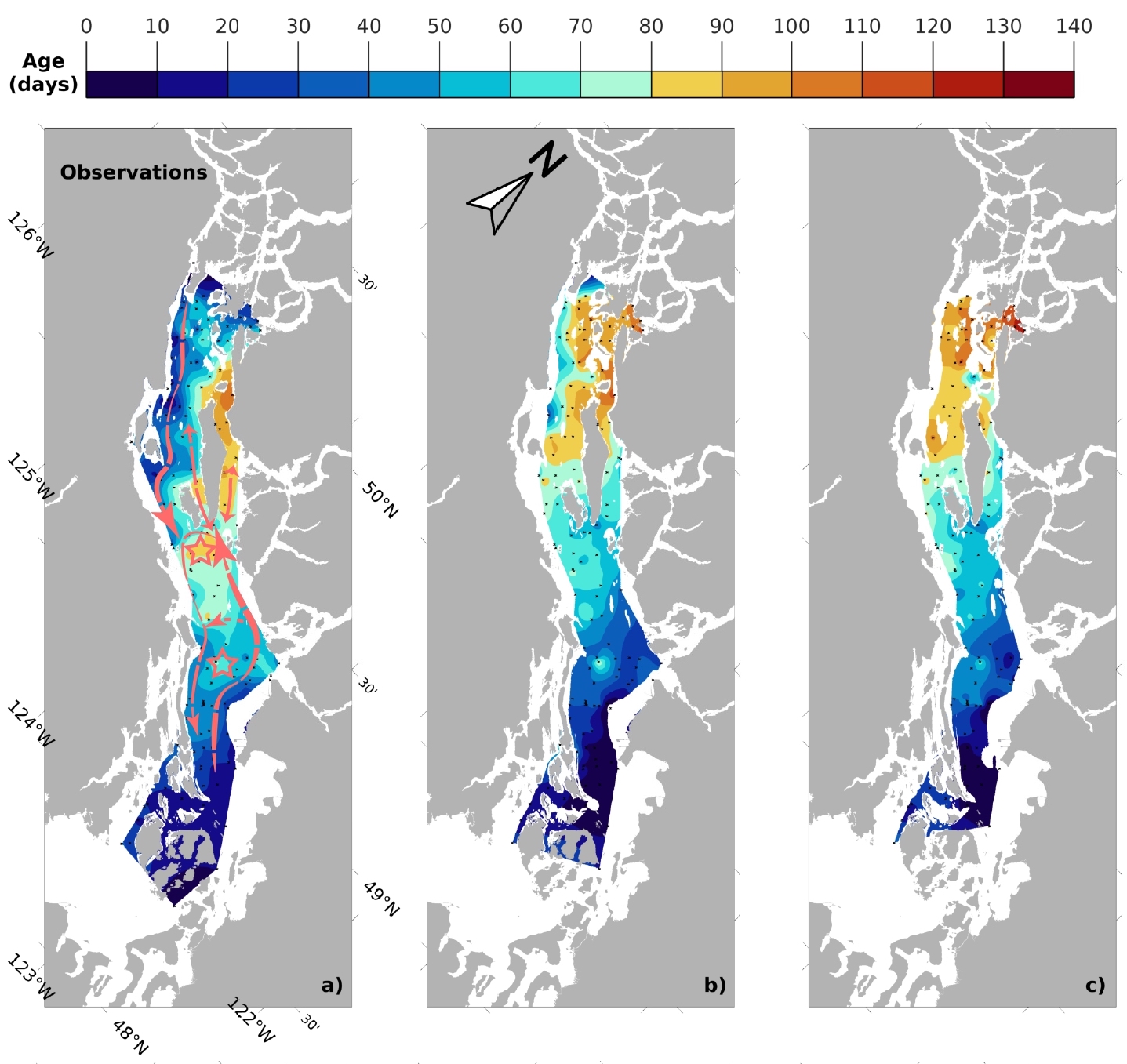Understanding where water goes and how fast it gets there sets the stage for everything else: oxygen supply, carbon storage, nutrient delivery, and contaminant fate. I use tracers, floats, gliders, and long-term records to quantify advection and ventilation from the open ocean to coastal estuaries.
Featured projects
Subtropical Mode Water (North Atlantic)
- Observed a dramatic decline in STMW formation and inventory during the 2010s.
- Why it matters: weaker mode water reduces upper-ocean heat and carbon storage, and alters mid-latitude ventilation.
- Project page: Subtropical Mode Water.

TReX Deep (Gulf of St. Lawrence)
- Conservative tracer release + floats to measure along-channel transport and dispersion of the deep inflow.
- At-a-glance: inland advection ~0.5 cm s⁻¹; travel time to estuary head O(1–5) years; boundary mixing influences vertical pathways.
- Project page: TReX Deep.

Intermediate circulation (Salish Sea)
- Transit times and renewal pathways in the Strait of Georgia set exposure windows for biogeochemistry and contaminants.
- Project page: Salish Sea.

Papers & reports
- North Atlantic STMW variability: Stevens et al., 2020
- Gulf of St. Lawrence tracer experiment: Stevens et al., 2024
- Strait of Georgia transit times: Stevens et al., 2021